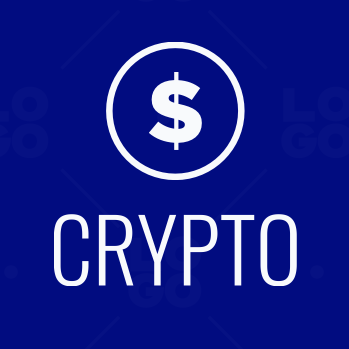Key Takeaways
- Smart contract platforms are the backbone of decentralized apps, finance, and NFTs.
- Ethereum remains dominant, but challengers like Solana, Avalanche, and Aptos are rising.
- Interoperability, scalability, and developer ecosystems define the 2025 smart contract race.
Smart Contracts: The Core of Web3
Smart contracts are self-executing pieces of code that automatically enforce agreements on the blockchain — without intermediaries. They’re the engines behind DeFi, NFTs, gaming, and tokenized assets, powering a trillion-dollar decentralized economy.
As we move through 2025, the smart contract ecosystem is more competitive than ever. Ethereum still leads, but newer chains are redefining speed, scalability, and interoperability. Let’s look at the top 10 smart contract platforms shaping blockchain innovation in 2025.
1. Ethereum (ETH): The Industry Standard
Still the undisputed leader, Ethereum continues to dominate the smart contract landscape thanks to its massive developer base, rich ecosystem, and recent upgrades.
Following the Dencun upgrade in early 2025, Ethereum’s Layer 2 ecosystem has exploded, drastically reducing fees and increasing transaction throughput.
With Rollups, zkEVMs, and account abstraction, Ethereum is cementing its role as the settlement layer of Web3.
Also read : What Is a Private Key?
Why it stands out:
- Largest DApp and DeFi ecosystem
- Strong developer community and institutional trust
- Seamless integration with Layer 2 scaling solutions
2. Solana (SOL): High-Speed DeFi Powerhouse
Solana remains one of the fastest smart contract networks, capable of handling over 65,000 transactions per second with low fees.
Despite past outages, its 2024–2025 upgrade to Firedancer, a new validator client, has significantly boosted stability. Solana dominates DeFi trading, NFT launches, and mobile crypto applications via the Solana Mobile Stack.
Why it stands out:
- Lightning-fast performance
- Active DeFi and NFT markets
- Growing developer ecosystem post-Firedancer
3. Binance Smart Chain (BNB Chain): Retail and Enterprise Favorite
The BNB Chain, backed by Binance, remains a go-to platform for affordable, accessible smart contracts.
It combines EVM compatibility, strong marketing reach, and integration with the Binance ecosystem — making it ideal for retail users and startups.
In 2025, BNB Chain’s focus on Modular Architecture and cross-chain compatibility continues to attract mainstream projects.
Why it stands out:
- Easy Ethereum migration (EVM-compatible)
- Huge user base from Binance exchange
- Rapid dApp deployment for businesses
4. Avalanche (AVAX): Multi-Chain Flexibility
Avalanche distinguishes itself with its Subnets, allowing developers to create custom, interoperable blockchains under one unified network.
In 2025, its partnerships with financial institutions and tokenized real-world asset (RWA) projects give it a strong foothold in institutional adoption.
Why it stands out:
- Customizable blockchain architecture
- Strong RWA and enterprise adoption
- Near-instant finality and high throughput
5. Cardano (ADA): The Academic Innovator
Cardano takes a research-first approach to smart contracts, emphasizing security, formal verification, and sustainability.
Since the Voltaire governance phase rolled out in 2025, Cardano’s ecosystem has expanded, supporting DeFi, NFTs, and identity solutions through Plutus V3 smart contracts.
Why it stands out:
- Peer-reviewed blockchain development
- Focus on identity, education, and sustainability
- Governance-driven upgrade roadmap
6. Polkadot (DOT): The Interoperability Leader
Polkadot thrives on interoperability, connecting independent blockchains via its parachain network.
Its 2025 OpenGov and Asynchronous Backing upgrades improved scalability and reduced transaction latency, making it a prime hub for multi-chain DeFi and cross-network smart contracts.
Why it stands out:
- True cross-chain communication
- Modular and flexible design
- Strong Web3 Foundation backing
7. Cosmos (ATOM): The Internet of Blockchains
Like Polkadot, Cosmos aims to connect blockchains — but through its Inter-Blockchain Communication (IBC) protocol.
In 2025, Cosmos powers dozens of appchains, including Osmosis, dYdX, and Celestia, and continues to push modular blockchain innovation.
Why it stands out:
- Powerful interoperability (IBC protocol)
- Custom blockchain creation via Cosmos SDK
- Rapidly expanding DeFi ecosystem
8. Near Protocol (NEAR): Developer-Friendly Innovation
Near Protocol continues to win developers with its easy-to-code smart contracts (written in Rust or JavaScript) and Nightshade sharding, which enhances scalability.
In 2025, NEAR’s chain abstraction technology lets users interact with apps across multiple blockchains without needing to manage wallets or gas fees.
Why it stands out:
- User-centric design and onboarding
- Cross-chain compatibility through Aurora (EVM)
- Energy-efficient, fast, and scalable
9. Aptos (APT): High-Speed Layer 1 for Web3
Built by former Meta engineers, Aptos leverages the Move programming language for secure and parallelized execution.
Its throughput of over 160,000 TPS and strong VC backing have made it a developer favorite for gaming and DeFi projects.
In 2025, Aptos’ partnerships with major Web2 brands are helping bridge mainstream adoption into blockchain.
Why it stands out:
- Extremely high scalability
- Strong developer tools and Move language
- Backed by global enterprise partnerships
10. Sui (SUI): Object-Based Smart Contracts
Also emerging from Meta’s Diem project, Sui focuses on object-oriented smart contracts, designed for fast transactions and digital ownership models.
In 2025, Sui is powering NFT marketplaces, on-chain gaming, and Web3 social apps with a focus on efficiency and user experience.
Why it stands out:
- Object-based data model for scalable dApps
- Low latency and gas fees
- Rapidly expanding in gaming and digital identity
The Smart Contract Race in 2025: What’s Next
The competition between smart contract platforms in 2025 isn’t about who can process the most transactions — it’s about who can scale trust, security, and usability across ecosystems.
As real-world assets, AI integration, and enterprise blockchains become mainstream, the leading platforms are investing in modular architecture, interoperability, and sustainability.
Expect 2026 to bring further collaboration — not just competition — as ecosystems connect to form a truly interoperable Web3 fabric.
Conclusion: The Builders of Tomorrow’s Digital Economy
Smart contract platforms are more than just networks — they are digital nations shaping the next era of finance, art, and governance.
From Ethereum’s dominance to Solana’s speed and Polkadot’s connectivity, each chain contributes to a more open and programmable world.
In 2025, choosing the right platform depends on your goals — whether that’s DeFi innovation, gaming, NFTs, or enterprise integration.
But one truth remains: smart contracts are rewriting how the internet handles trust — and the race to perfect them has only just begun.



